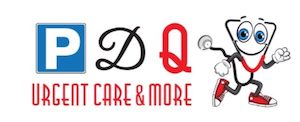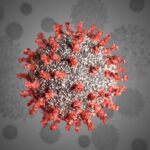CMO Perspective on Covid-19 over the Last Two Months
COVID-19….the first 60 days from the Caduceus perspective.
Caduceus started testing for Covid in mid-March. We began treating patients within days and started accepting referrals in early April. Overall we have tested over 2000 patients in our three OC testing sites and have actively treated over 85 cases with a “Covid Team” approach. Approximately half have recovered; the other half are receiving regular ongoing treatment.
Around half are previous Caduceus patients, the other half came under our care once diagnosed. The distribution is split between North, Central and South OC 33% each. In general, most of the early cases were in South OC, and the more recent cases were based up North. Half the cases were diagnosed the first three weeks of testing, with a slowdown after April 7. Since that time, we have still had a steady flow of new cases new weekly. From the start we began meticulous record keeping.
We have heard in other areas more cases are diagnosed in men. Not with us, the gender split is 50/50. As for seniors having more cases- that has not been our experience. Over half of our cases are under 40. Only 10% are seniors over 65.
Two hospitalizations have been recorded from our patient population, both to the ICU, ages 62 and 69, both healthy, both recovered.
No deaths have been reported.
As for many cases being asymptomatic, nope. Less than 10% of our cases are diagnosed symptom free.
As for what we hear about the most common presenting symptom being fever or cough? Guess again. 90% present with fatigue as the biggest symptom. Only 80% have fever at all, and almost half have parageusia (loss of taste and smell).
Early on, we saw the need for an aggressive strategy for treating even mild cases. The pattern was actually frightening with the first dozen cases.
A typical case-
- Day 1 Fatigue, maybe cough
- Day 2 Fever
- Day 3 Worsening cough
- Day 4-6 Copious fluid in chest feeling like they are drowning
- Days 7-15 More of the same, some a bit better, some worse. Air hunger, severe at times
- Days 16-21 Slow recovery
One patient suffered significant illness for 25 days. No; not a senior.
We find a regimen of “Double Z’s” helps a few…Zinc and Zithromycin.
A “Covid Cocktail” is very helpful once a positive swab was found. … Sudafed, Promethazine, and Albuterol inhaler. This is designed to combat mucus and open the airways.
Once a cough or air hunger develops we teach aggressive “Pulmonary Toilet” AKA Hygiene.
- Turn, cough, and deep breathe
- Incentive spirometry
- Postural Drainage and percussion
As many times a day as could be tolerated, at least three.
We see them via telemedicine frequently and daily if necessary.
One severe case in March was given Plaquenil AKA Hydroxycholoquine, almost as a last resort. There was immediate improvement so we used it again. And again. Every case improved. No cardiac issues. In fairness, we have been using Plaquenil in our practice for many years for connective tissue diseases, so felt comfortable with its use. Plus it was a five day course, whereas most lupus patients are on it a lifetime. The risk/reward ratio seemed to favor its use. In all we prescribed it 15 times; all 15 reported improvement.
We are aware this does not match scenarios from other centers, even the CDC, but as they say in sports – “we gotta call ‘em as we see ‘em.”
Severe cases are the hardest to treat, simply because there was no playbook for their treatment. They universally report an air hunger, feeling of drowning, copious mucus, and the sensation of not enough oxygen even with a deep breath. Several informed us of a near-death sensation. The look in their eyes – even over a video visit on their phone -was haunting. Would they all have recovered without the aggressive treatment we described? No one knows. Yet as victims recovered, we had the comforting feeling the “Big Guy” was guiding things.
Despite all measures we mentioned, the #1 factor in improvement is bed rest- complete and total.
Bed. Couch. Recliner.
Almost 25% suffered a relapse after recovery, and the number one factor in those cases was discontinuing bed rest.
We attempt to check a test-of-cure on all of our cases. On average it takes 30 days to turn “swab-positive” to “swab negative.” Almost all swab positive cases are showing antibodies, but it’s taking 30-60 days to do that. Whether the antibodies will prevent a re-infection via immunity still needs to be established. Theoretically it should.
Mysteriously, there are another 25 patients–taking us to over 100 cases–that have identical courses to our Covid-19 cases, right down to the air hunger, copious mucus, near drowning and parageusia. However, they are swab negative. Multiple times.
False negatives? Doubtful given the well established PCR technique. A Covid mutation unrecognized by the PCR test? That’s our hypothesis. We are treating them identically to swab positive patients, with the exception of withholding Plaquenil. Perhaps because of withholding it, these patients are sicker longer and have a tougher road to recovery.
As the city, county and state begin to re-open, we must prepare for a “second wave.”
Our advice based on what we have learned?
1. Avoid proximity to ANYONE sick. Do NOT forget how easy it is to catch Covid-19 and the long 14 day incubation period.
2. If you feel fatigued or have a fever, get to bed and get tested ASAP. DO NOT attempt to fight this off by yourself. Stay under the care of a physician.
3. Social distancing, masks, hand washing, AND avoiding unnecessary travel are still wise, although unpopular. At least until the numbers fall more.
4. If you test swab-negative Do NOT become complacent and assume it’s a common cold. You know the saying “If it quacks like a duck….”
5. Test. Test. Test. Either for the swab or antibody depending on your individual needs.
If you are a patient, we share this so you may avoid the virus and hopefully resume some type of normalcy.
If you are a physician, we share this information as part of the Hippocratic Oath we all took……”I will remember there is art to medicine as well as science. I will respect the hard won scientific gains of those physicians in whose steps I walk in, and gladly share knowledge as is mine with those who are to follow…”
Gregg DeNicola MD
Chief Medical Officer



